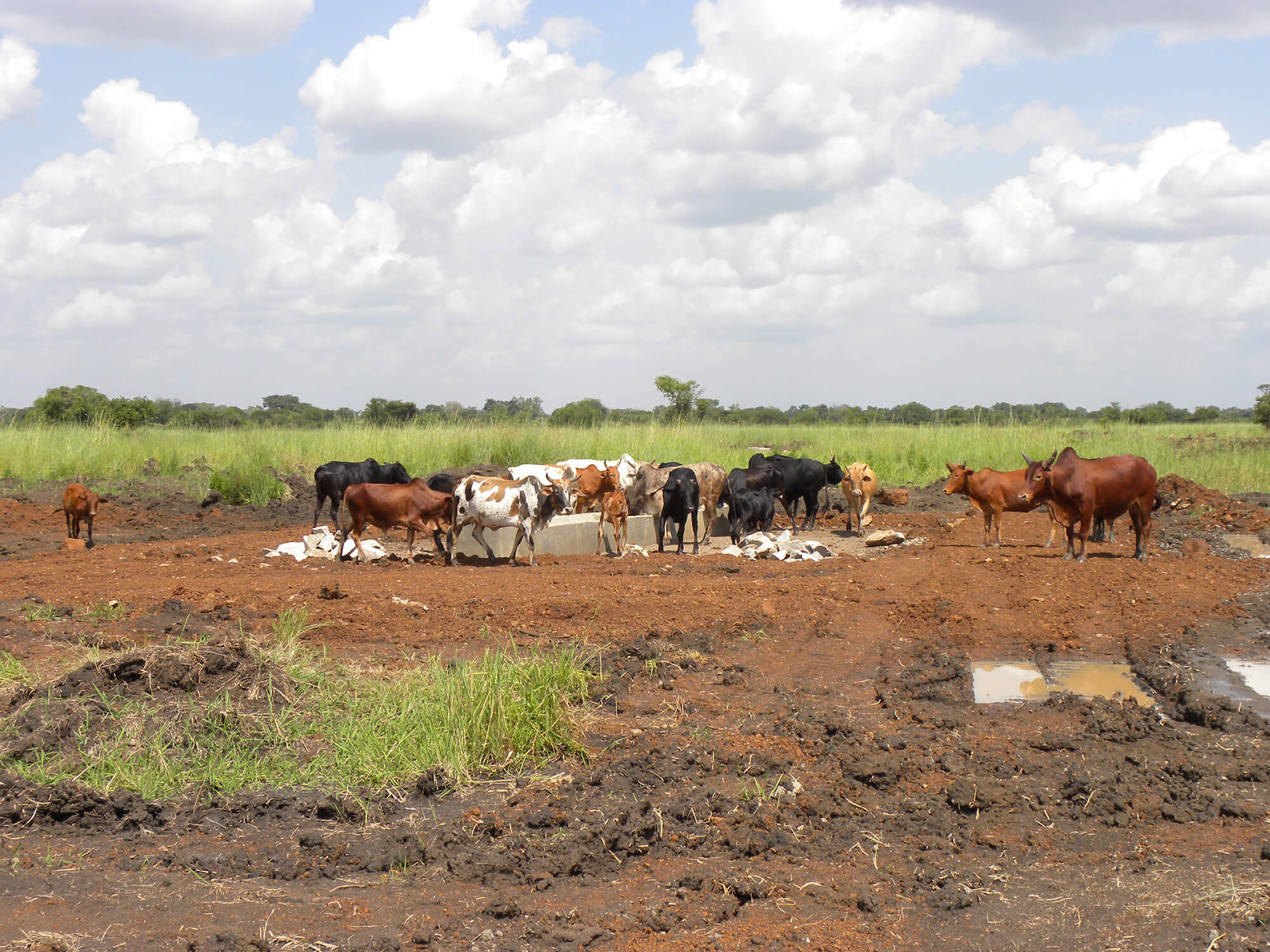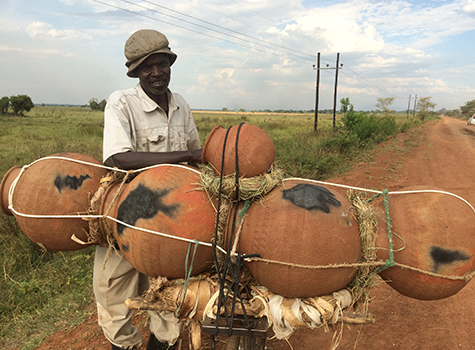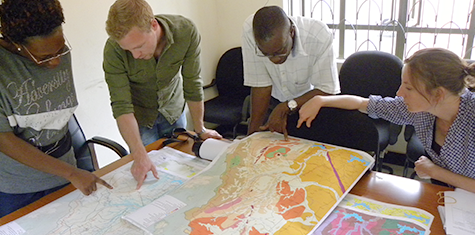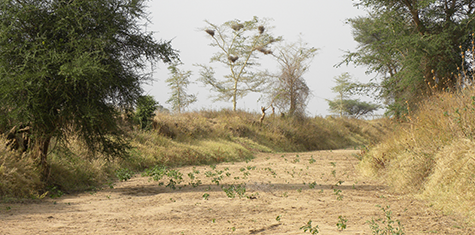
SUSTAINABLE WATER MANAGEMENT IN UGANDAA complex puzzle
In Northeastern Uganda, Acacia Water – as part of a consortium – is developing plans for sustainable water management in the basins of the rivers Lokok and Lokere. These rivers flow from upstream pastures to downstream farmland and marshes. Precipitation runs off very fast, frequently resulting in upstream droughts and downstream floods.
| |
The northern part receives some 500 to 700 mm of rain, according to Mieke Hulshof of Acacia Water, who is closely involved in the project. ‘This quantity is not a problem in itself, but it falls in intense, irregular downpours, causing a river of floodwater to run down south and often flooding the downstream areas that already receive twice as much precipitation.’ A long-term programme for sustainable water management was sorely lacking in this area – until now. Moreover, problems were tackled at a district level with limited cooperation with the higher echelons. ‘The new approach that was adopted to solve these issues is to take a comprehensive perspective on water management centred on the basins,’ said Hulshof. ‘The pivotal question in this respect is what we can think up together to improve water management in the entire area.’ |
|
Question to the consortiumThrough the support of the Deutsche Gesellschaft fur Internationale Zusammenarbeit (GIZ) and co-funding of Department of International Development (DFID) and on behalf of Kyoga Water Management Zone (KWMZ) under the Directorate of Water Resources Management (DWRM) of the Ministry of Water and Environment (MWE), Cordaid and partners have implemented a project to strengthen integrated water resources management in Lokok and Lokere Catchments. ‘What the adopted approach implies is that we, as a consortium, have to identify and list all aspects that impact the water in the river basins,’ according to Hulshof. ‘Examples include the characteristics of the water system, the soil type, quantity of precipitation, water consumption, vegetation, agricultural land use, industry and mining activities. Other examples include migration from the country to cities, and the transition from nomadic pastoralism to sedentary agriculture.’
Enormously complex puzzle‘Connecting the dots between all of these divergent matters will give you a picture of the tasks and challenges you can expect in the various locations, now and in the future,’ Hulshof continued. Within the consortium, it is Acacia who conducts research into the biophysical landscape features, the characteristics of the existing water sources and the demand for water. ‘We store these data in a central database and combine them with maps of the area. This database then becomes extremely important in preparing intervention and management strategies. The starting point for developing these strategies is the water perspective – but the plan will eventually turn out to be much broader. It will provide answers to questions such as: Which areas are suitable for agriculture? What will happen if the population increases? What must be done to ensure that this population has access to sufficient water of good quality? Which opportunities does the area offer for further economic development? This is quite a complex puzzle.’ | |
| Small-scale commercial activities and better pasture managementListing the tasks at hand is done in a very comprehensive approach with a very wide focus on the area, and the same applies to formulating possible problem-solving approaches. ‘Sometimes, we can conceive of very direct solutions of a predominantly technical nature, such as building dams or drilling wells. However, we can see opportunities of an economic nature as well. One of the ideas that were put forward is to promote small-scale commercial activities, for instance in the area of meat and dairy processing. In the long run, this will leave investments in water supply less dependent on charity and the government. Sustainable pasture management will become more interesting from a commercial point of view. Today’s haphazard grazing management leads to overgrazing and soil degradation.’ In the end, all of the possible solutions aim to keep the rain where it falls and slow down rainwater runoff. Hulshof stated: ‘One of the considerations in this respect concerns improving the protection of forests that can retain rainwater and prevent soil erosion, for instance.’ |
Engaging the support of local populations is of crucial importanceEngaging the support of all users, managers, administrators and investors is a crucial element in succeeding in these efforts. Hulshof explained: ‘This is by no means a matter of idealism alone. Without the commitment and support of stakeholders, none of these solutions – no matter how well thought out – have any hope of succeeding. Take, for instance, the serious impact of pasture management on the water regime. Governments have no way of monitoring this in such a vast area. The local population controls the area. Furthermore, this local population often comes up with some very good ideas. Giving them a voice and a say in solutions and concrete measures is the best way to ensure that we will find optimal solutions.’
Want to know more about this project? | |
Van Hogendorpplein 4 |
|---|
Location
Service
Newsletter
Search
IWRM & Catchment management | Strategical assessments | Urban planning | Innovative techniques | System specific approach





